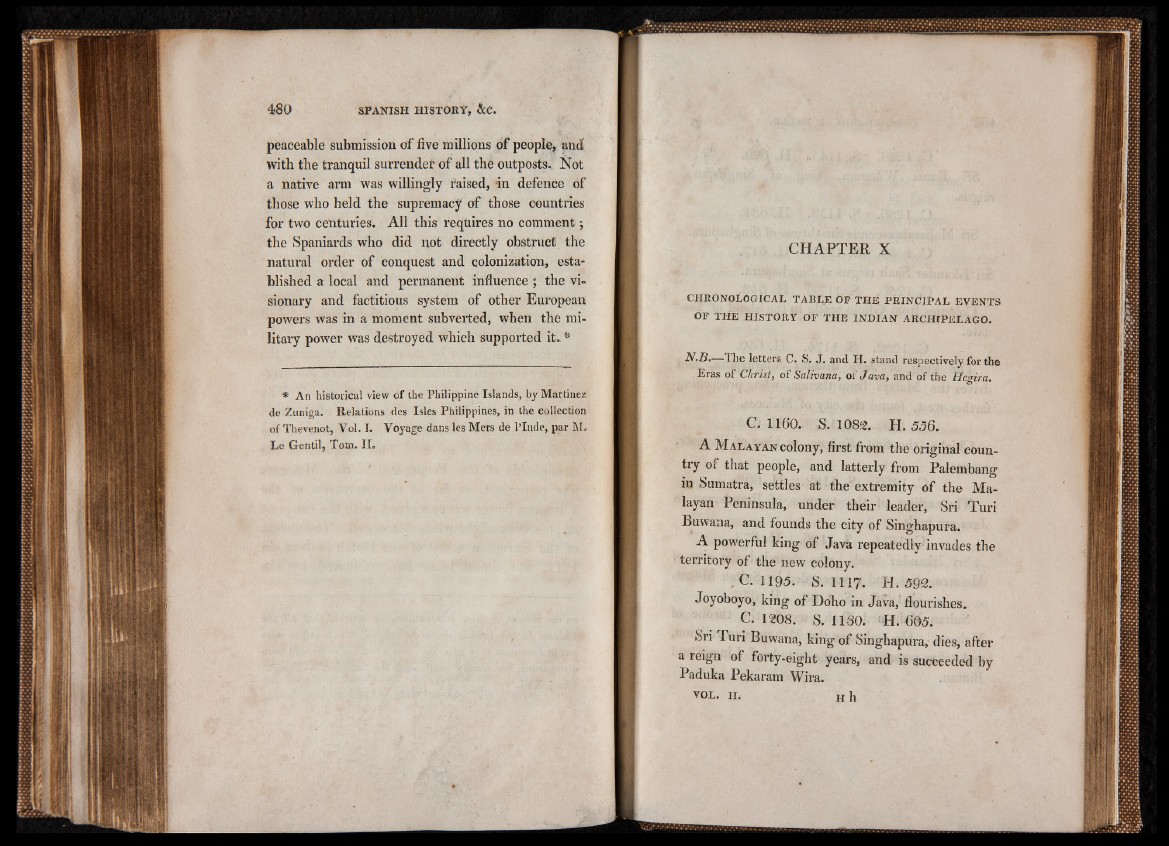
peaceable submission of five millions of people, and
with the tranquil surrender of all the outposts. Not
a native arm was willingly raised, in defence of
those who held the supremacy of those countries
for two centuries. All this requires no comment;
the Spaniards who did not directly obstruct the
natural order of conquest and colonization, established
a local and permanent influence ; the visionary
and factitious system of other European
powers was in a moment subverted, when the military
power was destroyed which supported it. *
* An historical view of the Philippine Islands, by Martinez
de Zuniga. Relations des Isles Philippines, in the collection
of Thevenot, Vol. I. Voyage dans les Mers de l’Inde, par M.
Le Gentil, Tom. II.
CHAPTER X
CHRONOLOGICAL t a b e e o f t h e p r in c ip a l e v e n t s
OF THE HISTORY OF THE INDIAN ARCHrPELAGO,
N .B— The letters C. S. j. and H. stand respectively for the
Eras of Chfist) of Scthvunct, of J uvq, and of the i i
C. 1160. S. 1082. H. 556.
A M a l a y a n colony, first from the original country
oi that people, and latterly from Palembang
in Sumatra, settles at the extremity of the Malayan
Peninsula, under their leader, Sri Turi
Buwana, and founds the city of Singhapura.
A powerful king of Javk repeatedly invades the
territory of the new colony.
| C. 1195. S. 1 1 1 7 . H. 592.
Joyoboyo, king of Doho in Java, flourishes.
C. 1208. S. 1130. H. 605.
Sri Turi Buwana, king of Singhapura,' dies, after
a reign of forty-eight years, and is succeeded by
Paduka Pekaram Wira.
VOL. II. u k